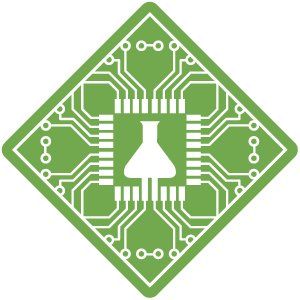预约演示
更新于:2025-05-07
Compound 4
compound 4(英矽智能)
更新于:2025-05-07
概要
基本信息
药物类型 化学药 |
别名- |
作用方式 抑制剂 |
作用机制 PTP1B抑制剂(蛋白酪氨酸磷酸酶-1B抑制剂)、PTPN2 抑制剂(蛋白酪氨酸磷酸酶非受体2型 抑制剂) |
治疗领域 |
在研适应症 |
非在研适应症- |
原研机构 |
在研机构 |
非在研机构- |
权益机构- |
最高研发阶段临床前 |
首次获批日期- |
最高研发阶段(中国)临床前 |
特殊审评- |
关联
100 项与 compound 4(英矽智能) 相关的临床结果
登录后查看更多信息
100 项与 compound 4(英矽智能) 相关的转化医学
登录后查看更多信息
100 项与 compound 4(英矽智能) 相关的专利(医药)
登录后查看更多信息
11
项与 compound 4(英矽智能) 相关的文献(医药)2024-04-01·European Journal of Medicinal Chemistry
Synthesis and structure-activity optimization of azepane-containing derivatives as PTPN2/PTPN1 inhibitors
Article
作者: Ren, Feng ; Ding, Xiaoyu ; Zheng, Jiamin ; Sun, Deheng ; Zhang, Man ; Cai, Xin ; Ding, Xiao ; Min, Lihua ; Zhavoronkov, Alex ; Aliper, Alex ; Wang, Feng ; Shi, Sujing ; Zhang, Zhisen
2023-04-01·International Immunopharmacology
Dihydroartemisinin-ursodeoxycholic acid conjugate is a potential treatment agent for inflammatory bowel disease
Article
作者: Zou, Xiaosu ; Yu, Jingfeng ; Sheng, Sihan ; Shen, Zhengwu
2021-10-01·Archiv der Pharmazie4区 · 医学
4‐Propargyl‐substituted 1H‐pyrroles induce apoptosis and autophagy via extracellular signal‐regulated signaling pathway in breast cancer
4区 · 医学
Article
作者: Zora, Metin ; Atmaca, Harika ; Yilmaz, Elif Serel ; Ilhan, Suleyman
1
项与 compound 4(英矽智能) 相关的新闻(医药)2024-09-25
PARIS--(
BUSINESS WIRE
)--A new
research study published in Nature Communications
highlights how Depixus’ scalable single molecule technology can provide detailed mechanistic insights into RNA-ligand binding, supporting the development of novel therapeutics.
Based on magnetic force spectroscopy (MFS), Depixus’ large scale interactomics platform is the first analytical technology capable of exploring dynamic biomolecular interactions both in real time and from thousands of individual molecules in parallel.
The study was led by Dr. John “Jay” Schneekloth, Jr. a leading expert in RNA-targeted drug discovery at the National Cancer Institute, part of the US National Institutes of Health. Depixus’ scalable MFS platform was used to probe the interactions between the
Bacillus subtilis (Bsu)
PreQ
1
bacterial riboswitch and either its natural ligand (PreQ
1
) or a synthetic small molecule known as Compound 4.
Riboswitches are structured sequences of RNA commonly found in the 5′ untranslated regions of bacterial mRNAs that help to control metabolic pathways. Ligands such as metabolites bind to the riboswitch, inducing a conformational change in the secondary structure and altering gene expression. This makes them an attractive group of novel antibacterial drug targets.
In a key part of the study, Depixus’ MFS platform was used to precisely measure the effects of either PreQ
1
or Compound 4 binding on immobilized target riboswitch RNA aptamers. The results showed both ligands stabilized the RNA structure, and the effect of compound concentration was measured.
Importantly, analysis of MFS data streams coming from individual interactions revealed that the two ligands had very distinct modes of action - a distinction that would have been missed using other analytical techniques that only generate surrogate or bulk, averaged measurements.
Jimmy Ouellet, Chief Scientist at Depixus, said “This study highlights how our ability to carry out independent analysis of individual biomolecular interactions enables us to visualize RNA-ligand interactions in real time, gathering valuable insights into distinct mechanisms of action. With our large-scale MFS platform we now have a technology that can see biology as it really happens, exploring the mechanistic impact of compounds on their targets at the level of individual molecules, generating detailed information about binding kinetics and more.”
Depixus’ unique platform delivers valuable data about a wide range of individual dynamic molecular interactions - including between RNA, DNA, proteins and small molecules - decoding disease mechanisms and unlocking faster routes to more effective therapies.
Find out more at
depixus.com
Reference:
Parmar S, et al. Nat Commun. (2024) 15:8173.
100 项与 compound 4(英矽智能) 相关的药物交易
登录后查看更多信息
研发状态
10 条进展最快的记录, 后查看更多信息
登录
| 适应症 | 最高研发状态 | 国家/地区 | 公司 | 日期 |
|---|---|---|---|---|
| 肿瘤 | 临床前 | 中国 | 2024-04-05 |
登录后查看更多信息
临床结果
临床结果
适应症
分期
评价
查看全部结果
| 研究 | 分期 | 人群特征 | 评价人数 | 分组 | 结果 | 评价 | 发布日期 |
|---|
No Data | |||||||
登录后查看更多信息
转化医学
使用我们的转化医学数据加速您的研究。
登录
或

药物交易
使用我们的药物交易数据加速您的研究。
登录
或

核心专利
使用我们的核心专利数据促进您的研究。
登录
或

临床分析
紧跟全球注册中心的最新临床试验。
登录
或

批准
利用最新的监管批准信息加速您的研究。
登录
或

特殊审评
只需点击几下即可了解关键药物信息。
登录
或

生物医药百科问答
全新生物医药AI Agent 覆盖科研全链路,让突破性发现快人一步
立即开始免费试用!
智慧芽新药情报库是智慧芽专为生命科学人士构建的基于AI的创新药情报平台,助您全方位提升您的研发与决策效率。
立即开始数据试用!
智慧芽新药库数据也通过智慧芽数据服务平台,以API或者数据包形式对外开放,助您更加充分利用智慧芽新药情报信息。
生物序列数据库
生物药研发创新
免费使用
化学结构数据库
小分子化药研发创新
免费使用
